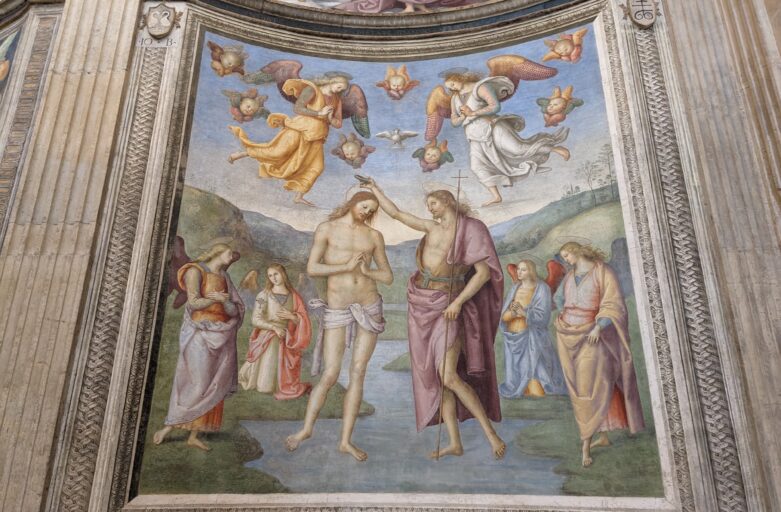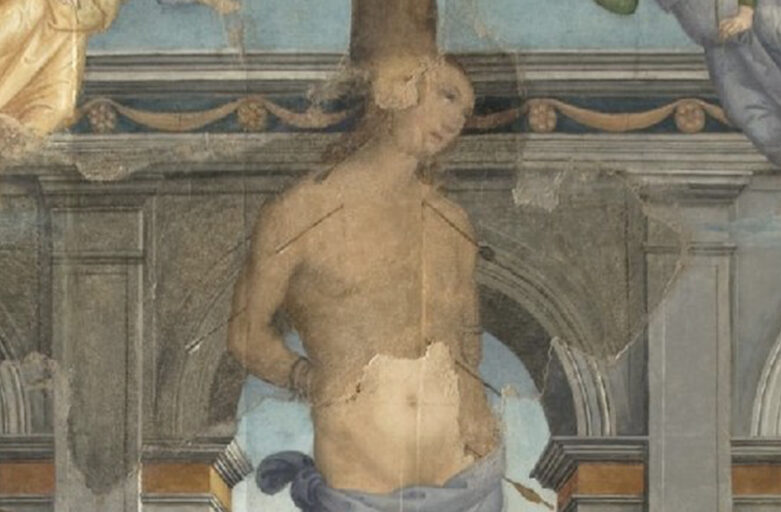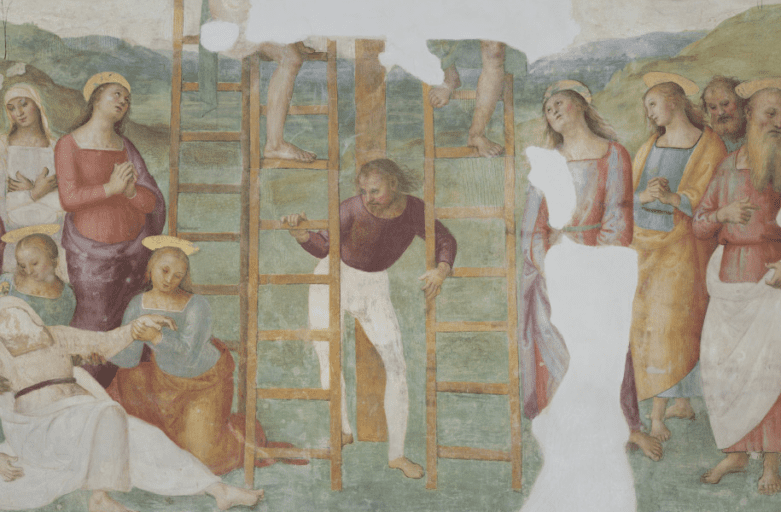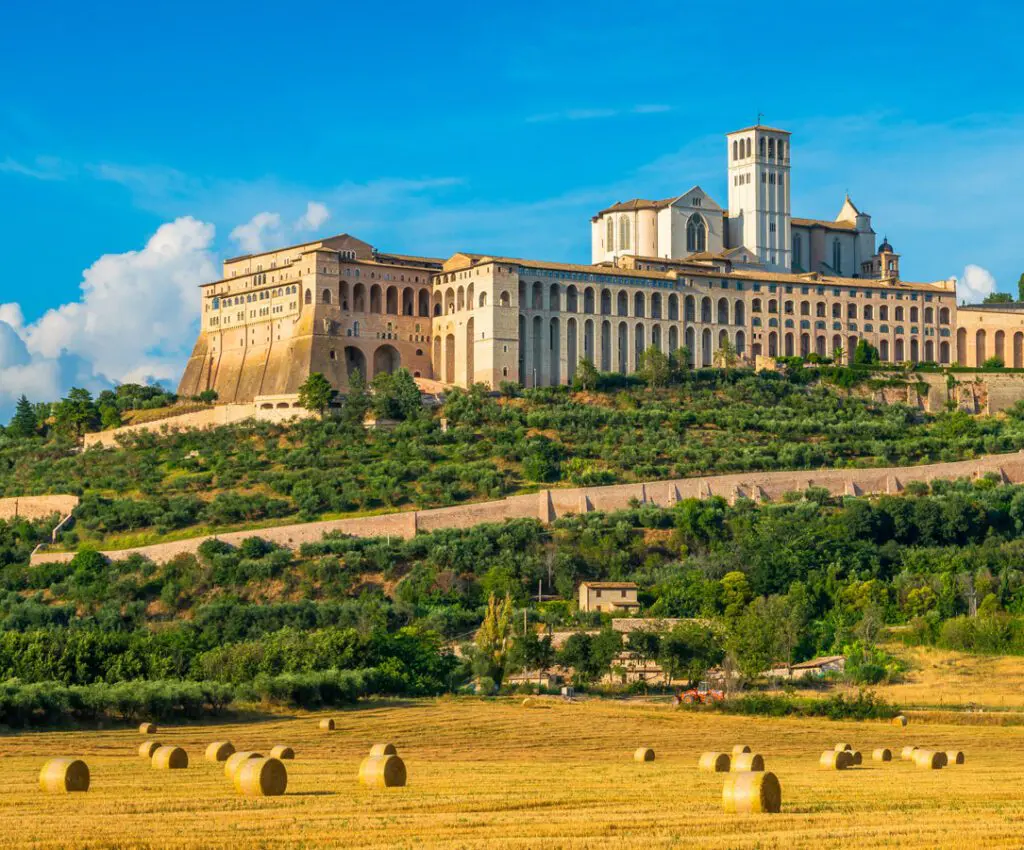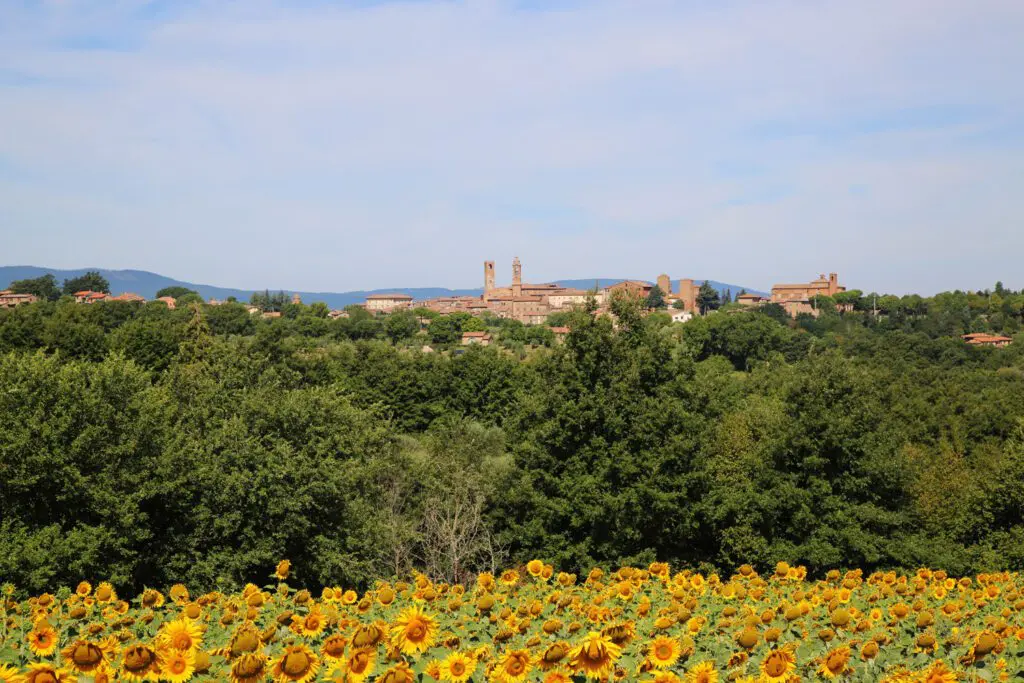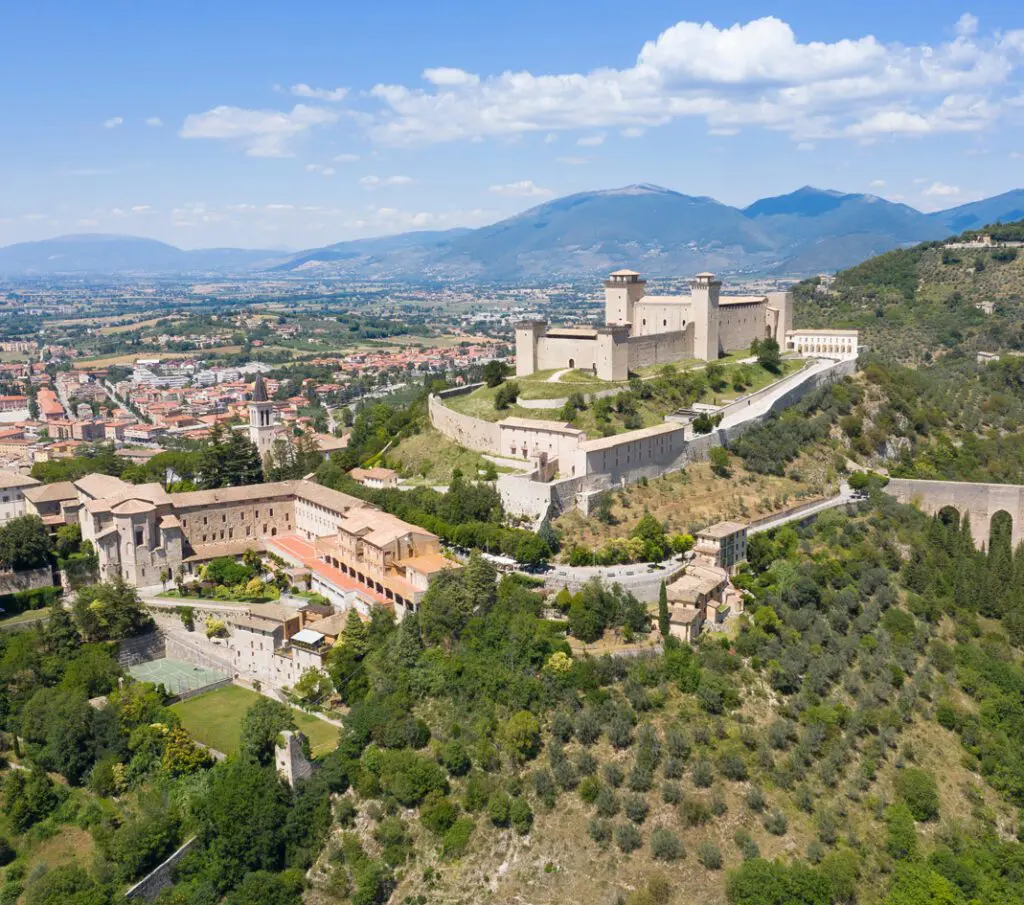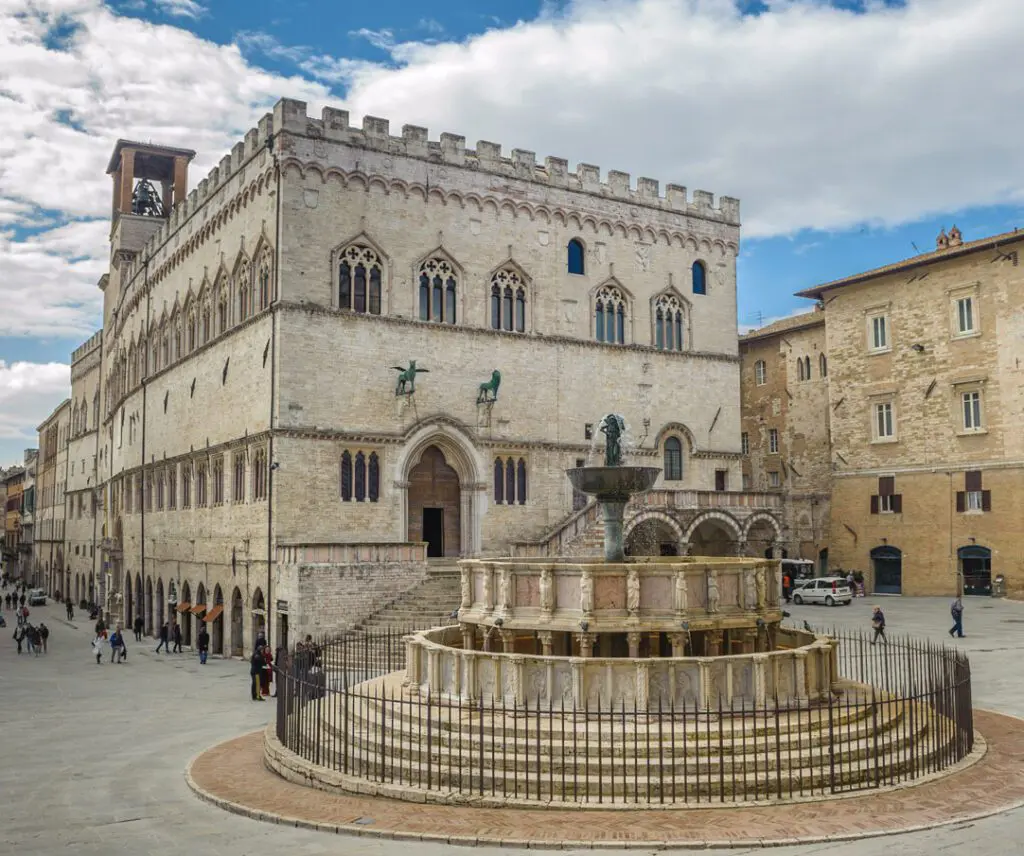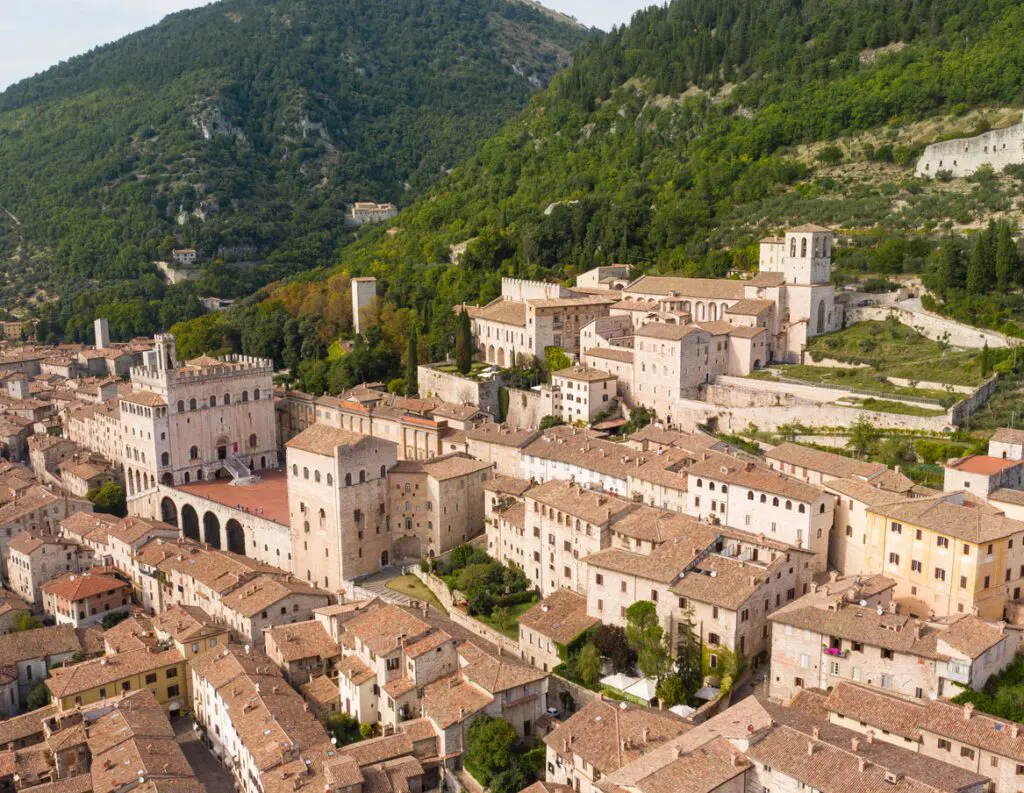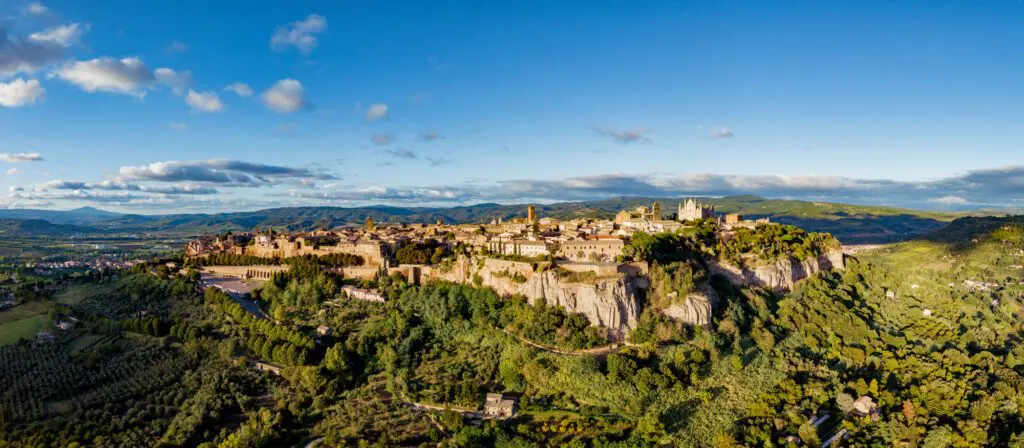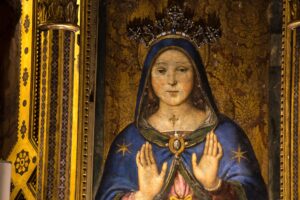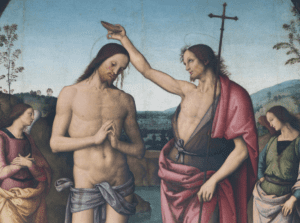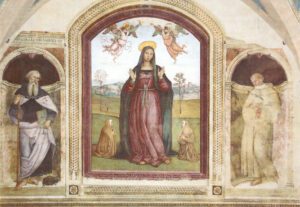Annunciation, God in glory among angels, and Nativity in the Saint Francis Museum
In the Church of Saint Francis in Montefalco, Umbria – now included in the Museum of the same name – Perugino painted a recess in the back facade, showing the Annunciation, God in glory, and Christ’s Nativity. Three different episodes, vertically separated but connected by ancient-Roman-like frames and lesene embellished with grotesques (the lesene being half pilasters protruding out of the wall, decorated with small multi-colored figures on a monochrome background).
Research carried on by Silvestro Nessi, a scholar in the field of Medieval and Renaissance art, documented the activity of the “divine painter” in Montefalco in 1503. This allows us to set a more accurate date to the fresco. It was therefore made shortly after the almost identical Nativity in the famous cycle at the Collegio del Cambio (College of Money Changers) in Perugia.
Annunciation, and God in glory
In the upper part, the so-called arch of triumph, you can see the Annunciation. On the right, Archangel Gabriel; on the left, Virgin Mary receiving the news of the Incarnation – the very instant in which Jesus was conceived as a man in Mary’s womb. A little dove, the symbol of the Holy Spirit, flies toward her. A curtain wall suggests that the scene is set inside a building.
Just below, you will see God in glory. In the concave area of the chapel, enveloped in a mandorla (an almond-like halo) and encircled by little angels, the Eternal Father blesses the Sacred Family depicted in the underlying Nativity. In his left hand He holds a sphere, the symbol of the universe He created.
Nativity
In the third painting, Perugino develops Christ’s Nativity as the subject matter. In the middle we see a refined hut, constructed by four pilasters embellished with grotesques and a truss roof (capriate in Italian; support wood beams in a triangular structure). In the foreground appear the main personages. Mary and Joseph, who kneel in an attitude of prayer, cast loving looks at the Infant, who lies on a sack among the grass. Three shepherds, some steps behind the Sacred Family, adore the newborn God.
The colors, delicate while lively, finely matched and arranged, convey peace and harmony. The whole creation is in awe and wonder before the birth of Jesus.
In his religious works, Perugino means to inspire the faithful who pray in front of his pictures, and help them meditate on the depicted episodes. This is why in this masterpiece by the Umbrian master, as well as in other paintings made by him, we perceive such a rarefied, still atmosphere.
Discover the testimonies of Perugino today
Routes and itineraries to discover the works of the divine painter

